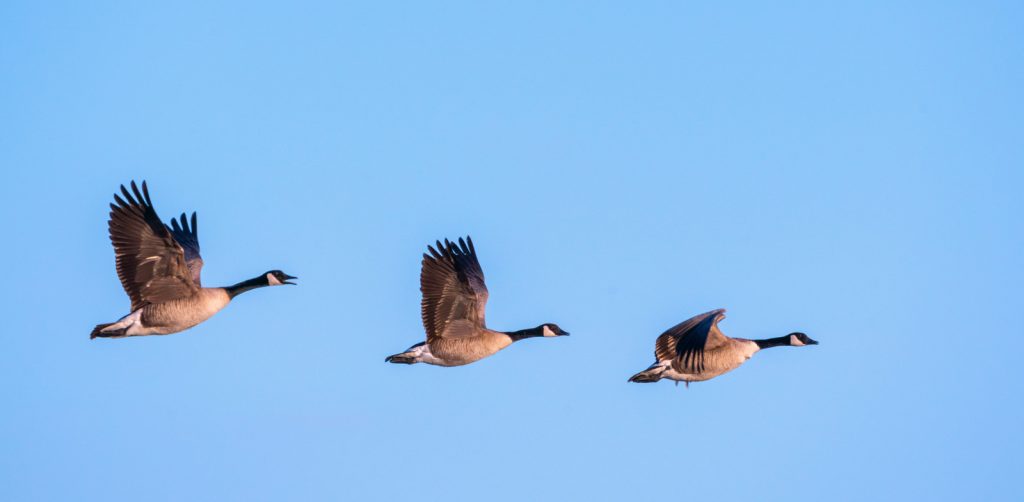
As I stood in line to vote this year, I thought about the birds migrating thousands of miles above my head. How do they choose a leader? How do they know who to follow on these arduous migratory journeys?
In lieu of ballot boxes, birds have a dominance hierarchy, commonly referred to as a “pecking order.” The term comes from a Norwegian zoologist, Thorleif Schjelderup-Ebbe, and his studies on chickens in 1921. Writing at a time when chickens were thought to be blissfully ignorant, mindless drones, Schjelderup-Ebbe noted that this was far from the truth and “a grave seriousness lies over the chicken yard.” In chicken flocks, the alpha hen is usually the most aggressive, and must maintain its position by constantly pecking its inferiors. But this isn’t an easy task, and the pecking order can change if the alpha hen gets sick or lets its guard down, overtaken by an upstart hen. If a rooster is present, he automatically becomes the alpha.
The pecking order extends across other species of birds, like dark-eyed juncos and pigeons. Other factors, such as sex (males are dominant to females) and age (older birds are dominant to the young whippersnappers) play a role in deciding the hierarchy. When it’s time to migrate, it’s the more experienced bird who will take the lead while the others fall in behind it. The bird leading the V-formation may not always be the most dominant. Canadian geese, for example, switch out who flies in front when the lead goose gets tired and then moves to a position with less wind resistance. The loud honks geese let out when flying are meant to encourage their leader to keep going. The older geese will set routes and make decisive turns but even younger geese get a chance to lead when the stamina of the lead goose runs out. When pigeons are flying together they’re looking for food, and will let out a distinct “coo” to let others know they’ve spotted some. The other pigeons in the flock can join in if they’re ready to land, or stay silent if they want to keep going.
What happens when multiple species end up at the same feeder? Typically the bigger bird wins out, but there are a few exceptions. Birds will show their dominance by flapping their wings, chasing after other birds, or by loud warning squawks. Some smaller birds like the downy woodpecker show a surprising temerity in standing their ground, according to studies done by the Cornell Lab, holding its own against the larger blue jay. Hummingbirds, in spite of their small stature, vigorously defend floral territory against other members of their species. Even if a larger bird like a crow or pigeon is present, this is unlikely to deter a hummingbird from feeding.
As winter sets in and food becomes more scarce, take a look at the bird fight club in your backyard. Just remember the first rule: don’t squawk about it.
Author
-

Bryce Flanagan moved from Sacramento, CA to Taos County in 2016, and has lived in Questa for two years. He's passionate about the unique and beautiful wildlife of our state and is a regular contributor to the Questa Del Rio News.
View all posts


